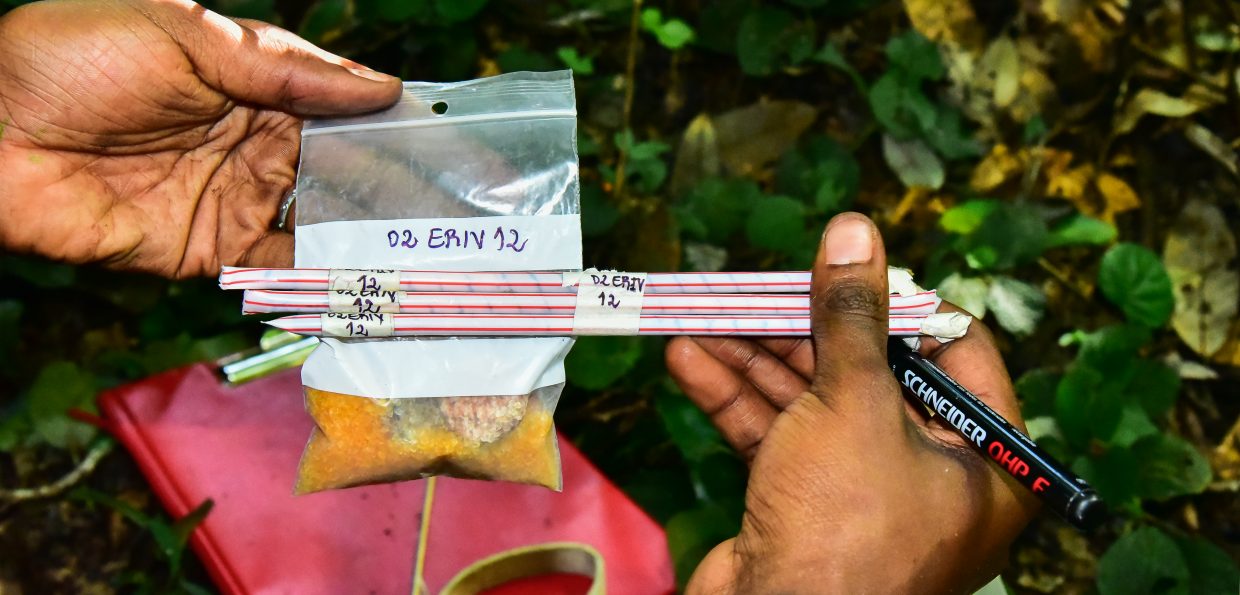New paper out in Forest Ecology and Management!
Abstract
Origin verification of timber is essential to expose origin fraud and reduce illegal timber trade. A promising forensic method for origin verification is based on stable isotope ratios in wood, but large-scale studies that test local and regional variation to apply the method at a sub-country scale are lacking.
We investigated the isotopic variation in wood in Central Africa for two economically important timbers (Azobé and Tali). We measured wood δ18O, δ2H, δ13C and δ34S at 17 locations in the main timber exporting countries (Cameroon, Republic of the Congo, Gabon). This is the first study to quantify both local and regional variation as well as species differences. We applied a novel statistical technique, Quantile Regression Forests, to develop spatial predictions of isotopic composition based on gridded covariables (isoscapes). This is a powerful method to develop isoscapes based on non-normally distributed and correlating covariables.
We found limited potential for origin assignment with stable isotope ratios in Central Africa, because the local variability of values for all four studied isotopes was generally higher than regional variation. This led to low site classification success (Azobé: 32.1%, Tali: 20.5%) and large uncertainty in the isoscapes. The limited origin signal can be attributed to low variation in the driving environmental factors in the region. The isotope ratios did differ between the three countries, country-level assignment was good (Azobé: 79.4%, Tali: 61.7%) and considerably higher than site-level values. Lastly, we found a significant species and site effect, stressing species-specific reference datasets might be needed for future isotope tracing studies.
These results show that the four isotopes applied here have limited potential for sub-country origin assignment of timber in this region (Cameroon, Republic of the Congo, Gabon). Nevertheless, the variation at large spatial scales resulted in promising accuracy of country-level assignment. These findings contribute to our understanding of forensic timber tracing methods and can help to identify the most appropriate method for a tracing question at hand.
